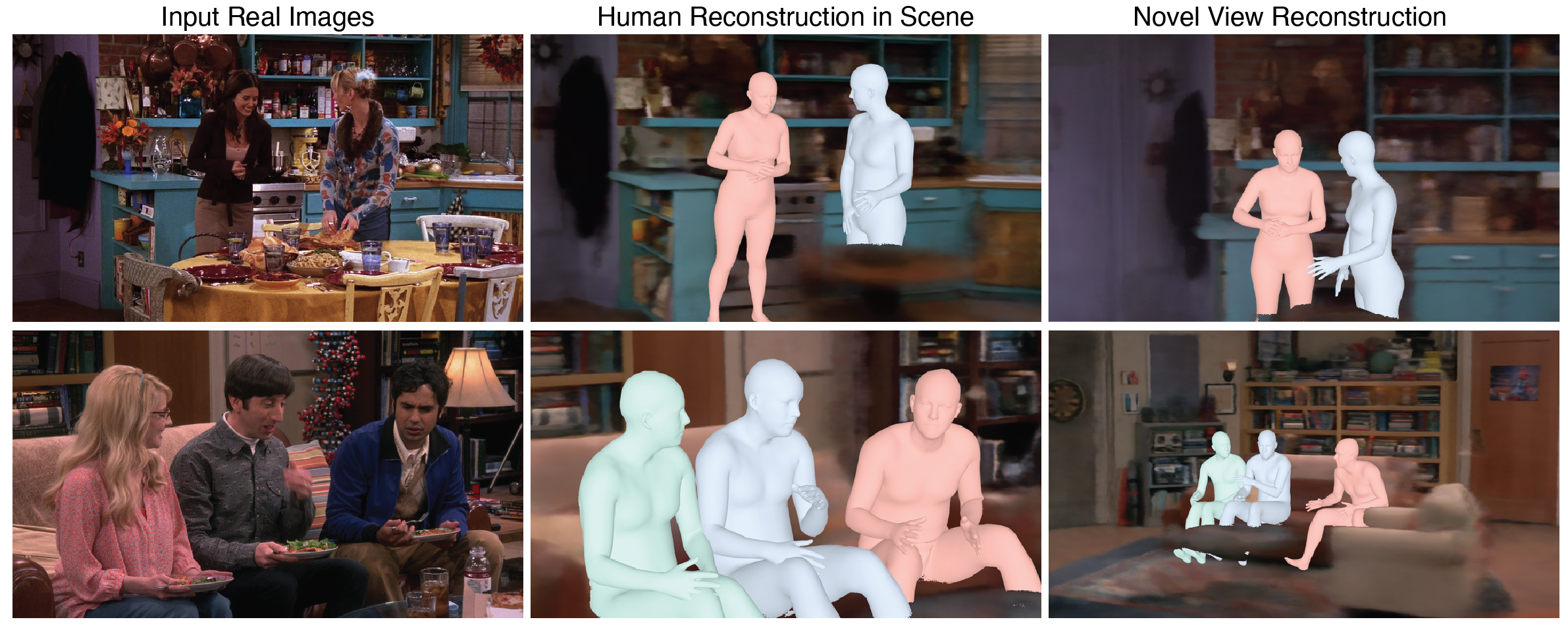This is the repository for the paper "The One Where They Reconstructed 3D Humans and Environments in TV Shows" in ECCV 2022.
Georgios Pavlakos*, Ethan Weber*, Matthew Tancik, Angjoo Kanazawa
You can find our project page at https://ethanweber.me/sitcoms3D/.
conda create --name sitcoms3D -y python=3.8
conda activate sitcoms3D
python -m pip install --upgrade pip
python setup.py developTo download the metadata related to our paper, please see METADATA.md.
We provide a demo of using our data in notebooks/data_demo.ipynb. To run this demo, you'll need to install the required packages in requirements.txt.
pip install -r requirements.txt
python download_smpl.py
# now open notebooks/data_demo.ipynb to play with the dataThis is how you'd train with the TBBT-big_living_room environment. The runs will be saved to the data/sparse_reconstruction_and_nerf_data/TBBT-big_living_room/runs folder, which you can visualize with TensorBoard.
python sitcoms3D/nerf/run_train.py --environment_dir data/sparse_reconstruction_and_nerf_data/TBBT-big_living_roomWe recommend using nerfstudio for future work with the sitcom3D data. A fast method with a sitcom3D dataloader (called the "friends" dataset) is under development here. It can be used with a real-time viewer.
See REGISTER_NEW_IMAGES.md for details on how to register new images to our sparse reconstructions (i.e., to obtain new camera parameters for images in our sitcom rooms).
We used the codebase https://github.com/ethanweber/anno for our qualitative system evaluation. The code requires data, setup, and webpage hosting. However, it is quite generalizable and can be used for many qualitative user study tasks. The basic idea behind the repo is to create HITs (human intelligence tasks) with questions each composed of (1) a question, (2) a list of media (images, videos, etc.) and (3) possible choices. Given the question, the user will respond with their answer choice. We employ consistency quality by showing the same questions multiple times with different ordering of media/choices and only keep responses where annotators performed sufficiently well.
If you find this code or data useful for your research, please consider citing the following paper:
@Inproceedings{pavlakos2022sitcoms3d,
Title = {The One Where They Reconstructed 3D Humans and Environments in TV Shows},
Author = {Pavlakos, Georgios and Weber, Ethan and Tancik, Matthew and Kanazawa, Angjoo},
Booktitle = {ECCV},
Year = {2022}
}
